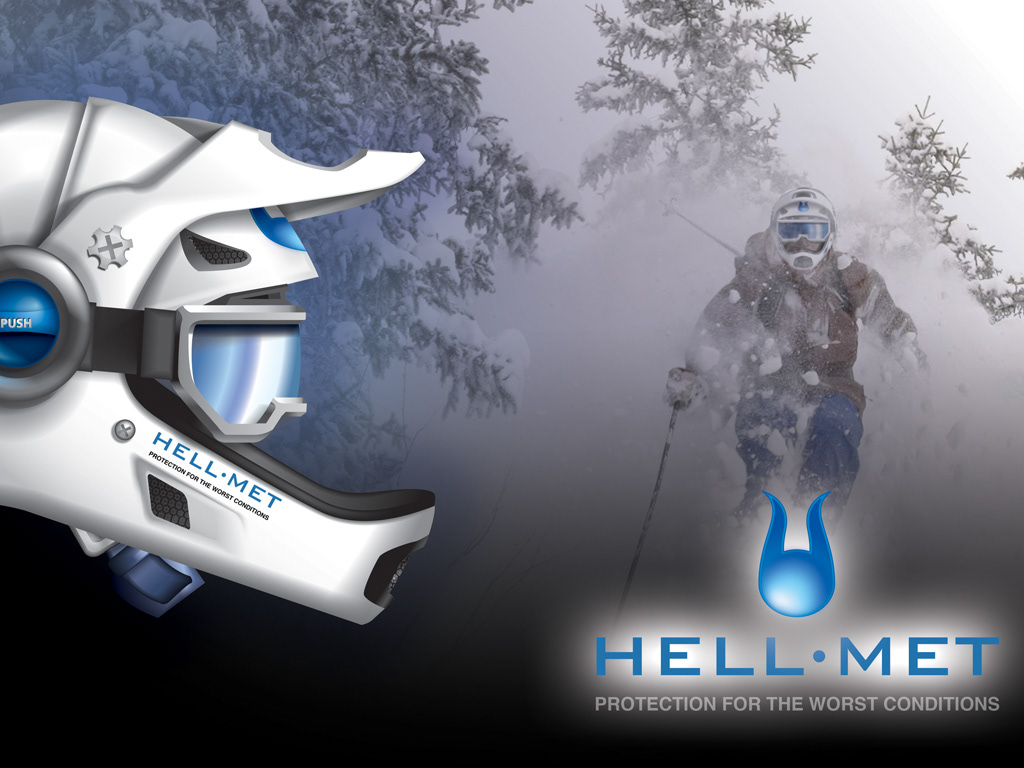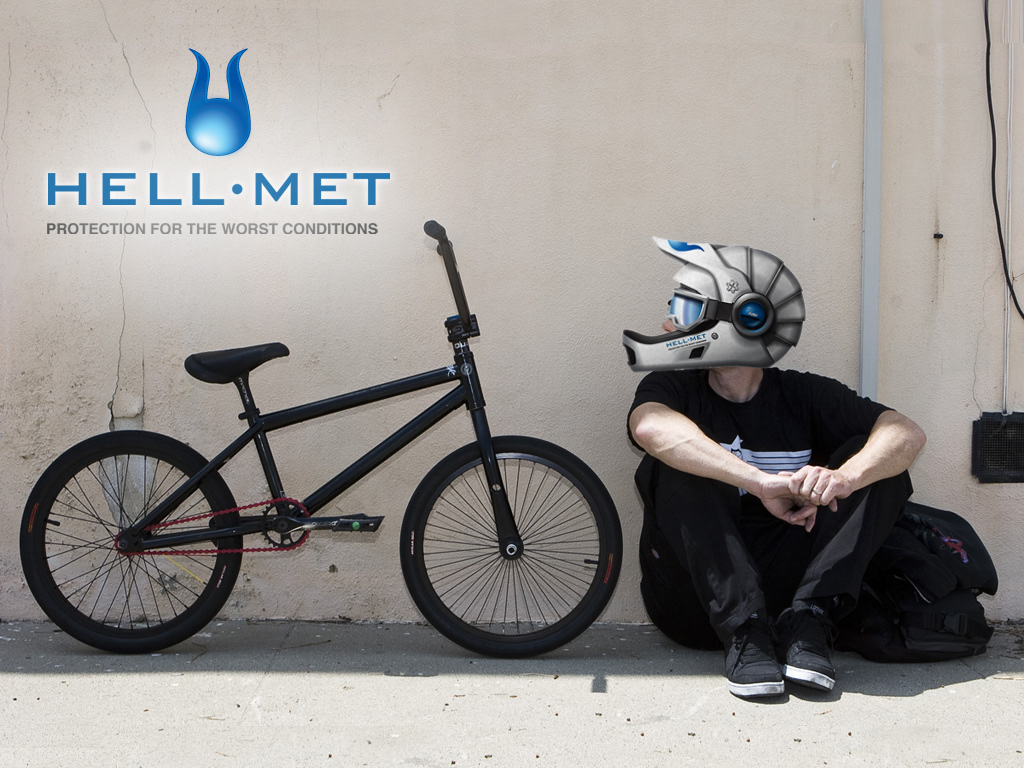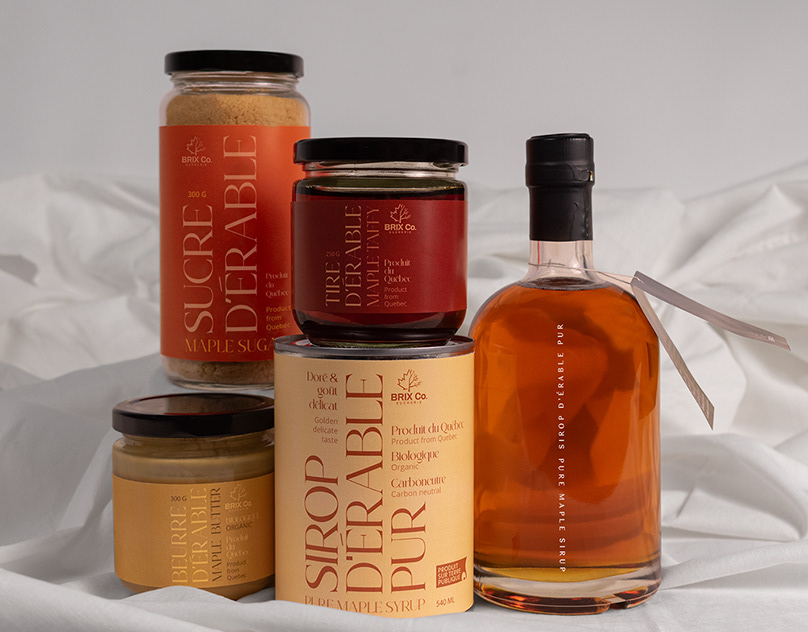HELL.MET
Protection for the Worst Conditions
YEAR: 2009
GOAL: Create a more convenient helmet to be used in different sports.
SOLUTION: An adaptive sport activity and foldable helmet design.

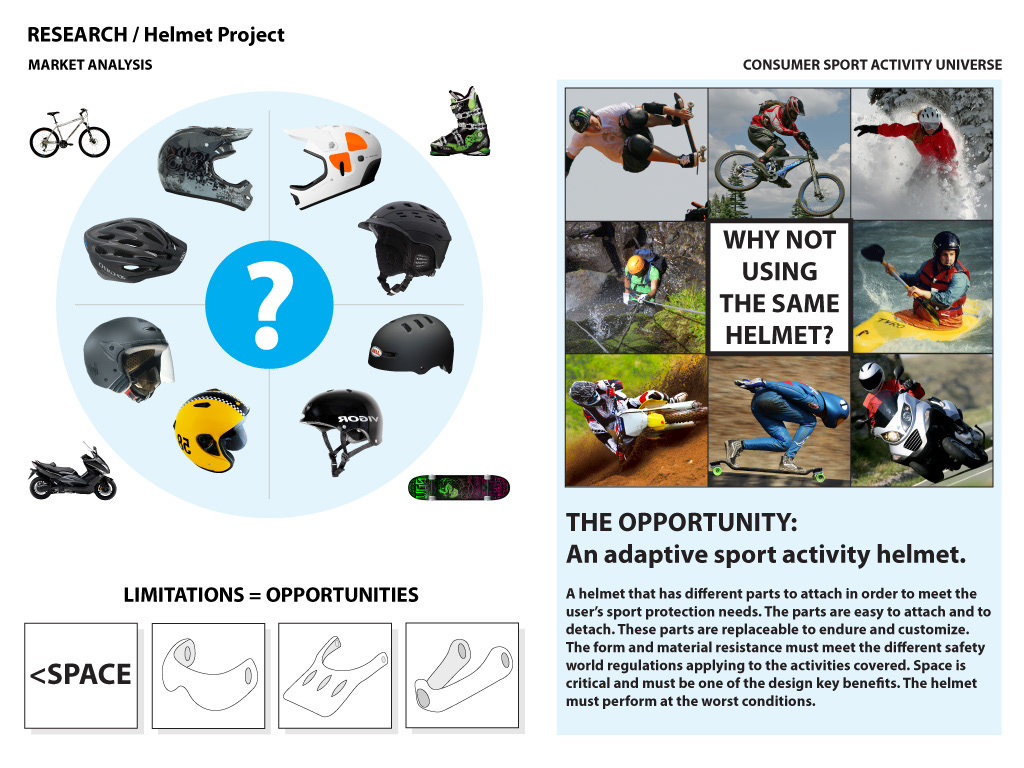
RESEARCH
Helmets are needed for a growing number of sports and daily activities. Market and consumer behavior analysis showed several opportunities to work on such as space reduction (helmets are big and it is inconvenient to travel or move around with them), visor is not common, easy to attach removable peak and jaw protection. Research was crucial to understand the different international, and per country, safety certifications for different sports: DOT, Snell, CE, UIAA, ASTM (just for U.S.) and ECE 22.05 are some of the most common. The opportunity: one helmet for almost any activity.

IDEATION
The sources of inspiration came from nature. Like the pill-bug, which also inspired the folding mechanisms in medieval armor, or like the nautilus sharp so close to Fibonacci spiral. Another inspiration was the visor from combat jet pilots that could be moved up and down. This rotational mechanism was critical for further concept sketches. I also explored the different interactions that a helmet could provide like temperature control (fans to cool down or heating system powered by solar cells), emergency signals (red LEDs for bikers or skiers on a foggy day, recon, emergency phone calls and text message providing location).

First sketches searched the core shape and rotation inspired by the pill-bug. I started to go deeper on the minimum number of segments needed to keep the shape and the mechanism working. Also the orientation of the segments has ventilation properties and an impact on the rotational mechanism.
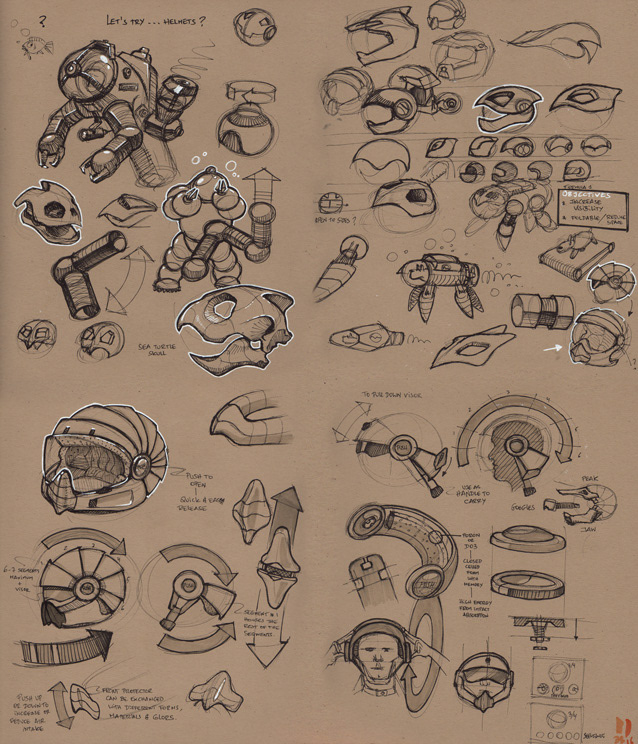
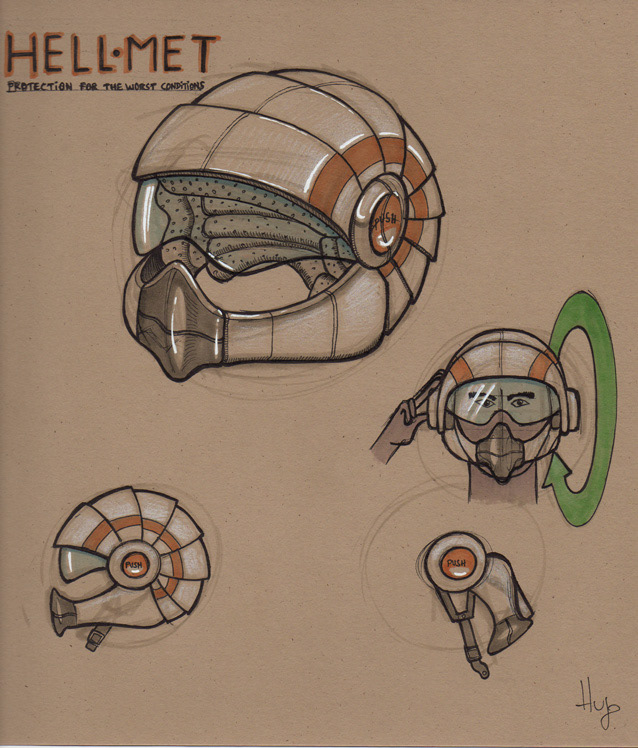
These concept sketches show the final number of 7 segments, the attachable peak and jaw protection, as well as the lock system for special goggles (the visor can also be used if preferred). The releasing system for the peak, jaw, and goggles is by TURNING, while the helmet gets folded by PRESSING the “ear” restrain disc.
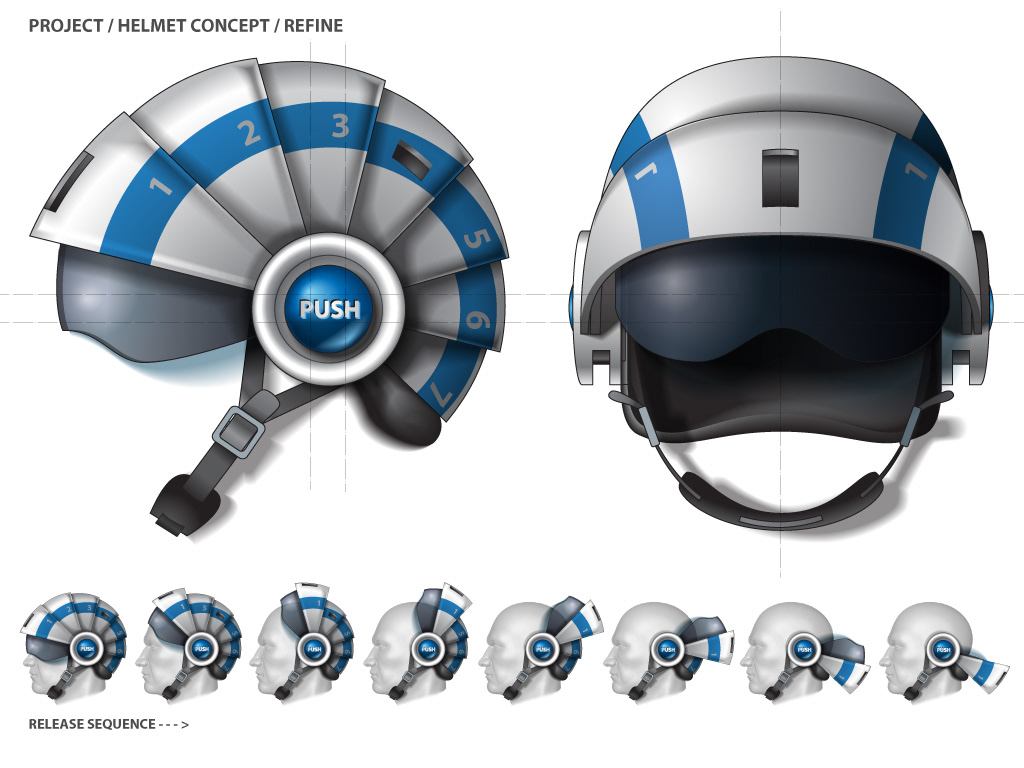
The segments are quickly released or mounted in 7 steps by pressing the push disc and turning your hands backwards or frontward. Helmet peak and jaw protection are not mounted, providing a good example for skiing or urban motorbike use. Once the helmet is completely released, it is very compact to storage. MATERIALS: fiberglass outer shell, multi impact liner, polyurethane foam pads for liner interior (anti-sweat, removable, adjustable, and washable), thermally shaped visor, and steel netting on the segments to improve air ventilation. BRAND CONCEPT: HELL·MET – Protection for the worst conditions.
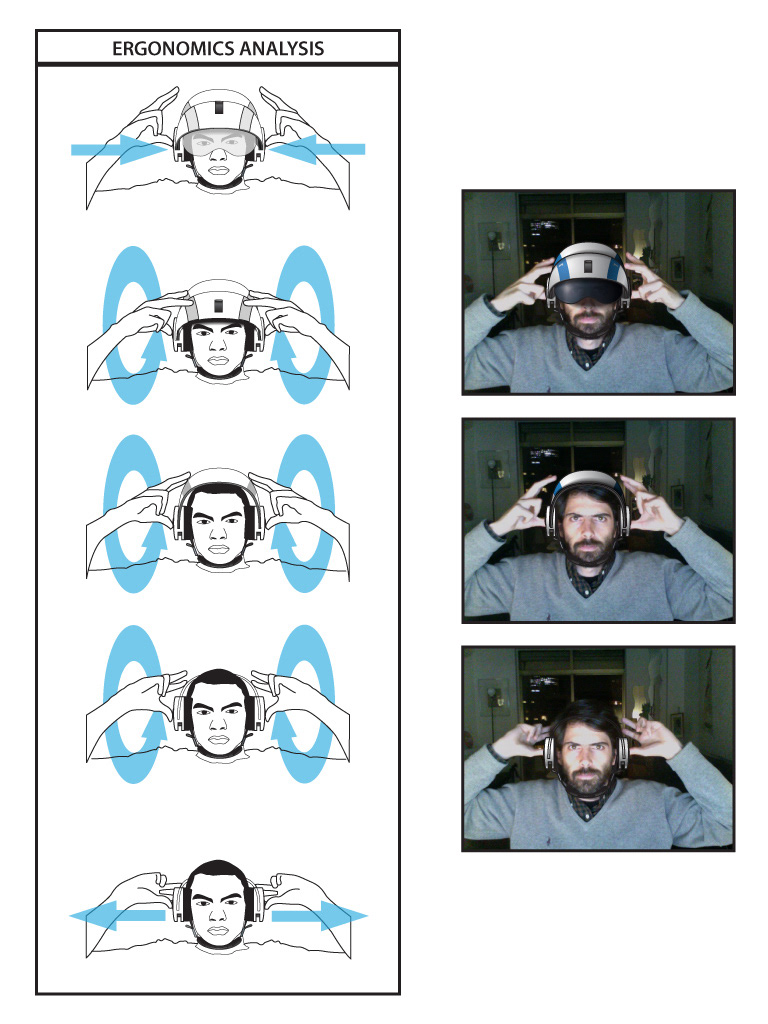
USABILITY
This is a usability exploration to define how easy are the releasing steps to be done by the hands rotation. First by pushing to unlock the segments and second by rotating easily the hands moving the frontal segments backwards. The opposite sequence is required in order for the helmet to be fully mounted. The peak and jaw protection can be added once the helmet is fully mounted.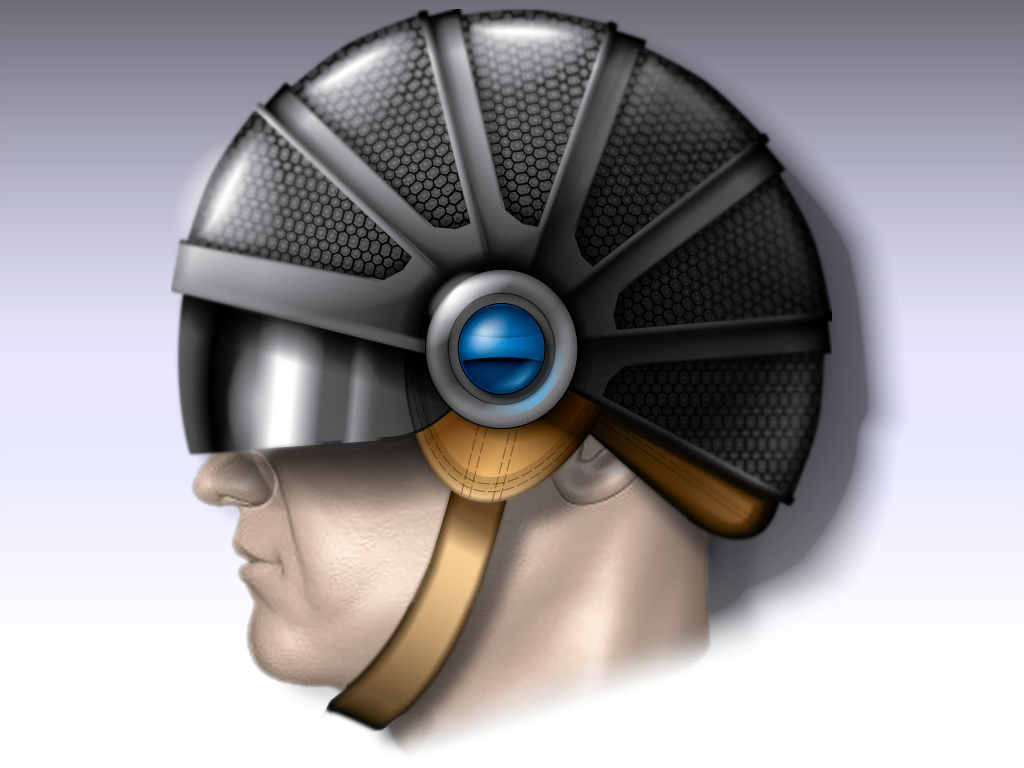
MATERIALS
Helmet segments with a steel netting and honeycomb structure that improves weight and air ventilation.
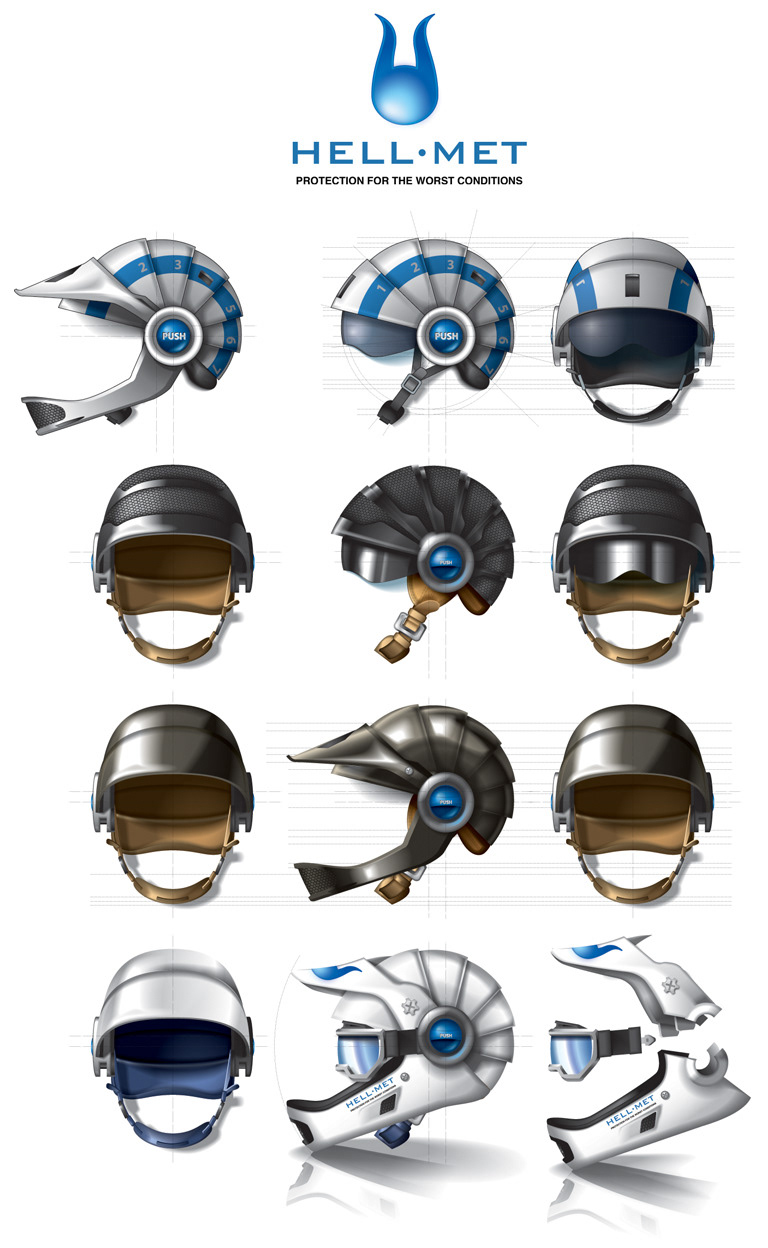

PHYSICAL MODEL
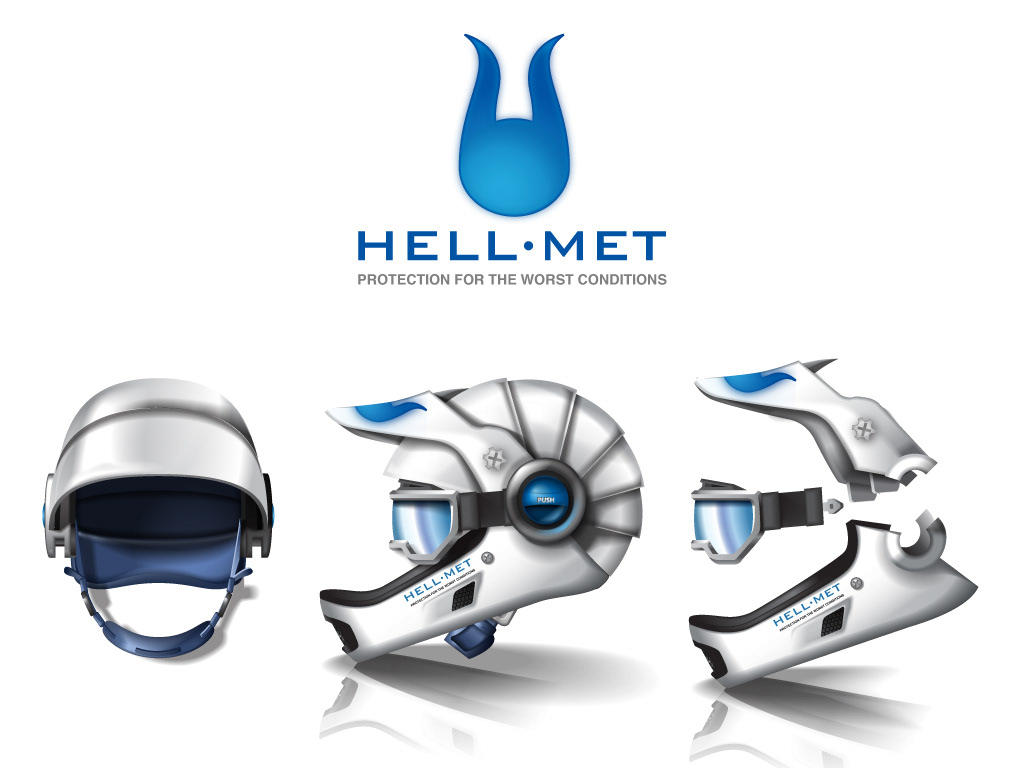
FINAL DESIGN
The final design integrates the peak, jaw, and goggles and how these elements can get attached to the basic helmet shell being able to adapt to the different user protection needs.